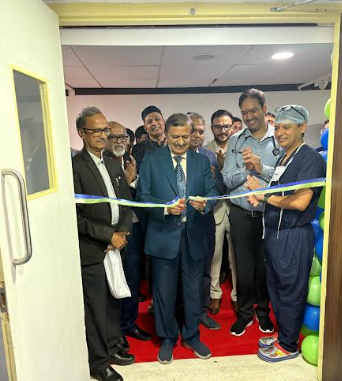At the 25th Wellness Congress, in the presence of 2,000 people from 100 countries, Nerio Alessandri launched Healthness, the new vision that will revolutionize the future of wellness and prevention

Forty years ago, in an industry characterized first by bodybuilding, then by fitness, Technogym launched a new concept: Wellness, which, capitalizing on the experience of fitness, generated a social opportunity, involving all stakeholders – governments, companies and citizens – in building a healthier and more active society. Since then, Technogym has continued to innovate relentlessly: from biomechanics, to digital, to artificial intelligence. Today Technogym is a Life Science company, able to offer Precision Training programs for every individual and need.
Over the years, Technogym has built an ecosystem that, as of today, connects 25 million users (out of a global community of 70 million people training with Technogym), industry operators, doctors, and trainers worldwide. Leveraging the company’s years of investments in cutting-edge technologies and AI, Nerio Alessandri introduced the new vision of Healthness.
The ability to predict disease before it occurs will be the greatest revolution of our time. Healthness leverages Wellness and takes this vision even further by making health prevention programs tangible thanks to data and AI.
Scientific studies confirm that health is influenced by only 20-30% by genetics, while the remaining 70-80% depends on epigenetics (lifestyle). There are therefore no magic formulas to achieve Healthness: it requires training that targets muscular strength, cardiovascular endurance, balance, flexibility, and cognitive quality. Physical exercise is a true medicine (Exercise Is Medicine) and Healthness represents a preventative medicine to improve physical performance in the short term and guarantee healthy longevity in the long term.
Thanks to the trillions of data collected in 30 years on the Mywellness Open Platform, today with AI, Technogym is able to offer Healthness as products and services: Technogym Checkup, the new assessment station based on AI is able to analyze psycho-physical and cognitive parameters and automatically calculate Precision Training programs. The new AI-based Biostrength and Biocardio product ranges, connected to the Technogym Ecosystem, allow you to deliver Precision Training Programs automatically thanks to the Technogym App, to track data and adapt the program to progresses.
In practice, Healthness means Precision Wellness and thanks to data-driven customized programs it allows you to obtain results superior by approx. 30% in the same amount of time.
Healthness, in addition to helping people live longer in good health, represents a great business opportunity for fitness, sports, hospitality, corporate and medical operators and personal trainers to evolve their offering and create value through hyper-personalization.
At the 25th Wellness Congress, in the presence of 2,000 people from 100 countries, Nerio Alessandri launched Healthness, the new vision that will revolutionize the future of wellness and prevention
Forty years ago, in an industry characterized first by bodybuilding, then by fitness, Technogym launched a new concept: Wellness, which, capitalizing on the experience of fitness, generated a social opportunity, involving all stakeholders – governments, companies and citizens – in building a healthier and more active society. Since then, Technogym has continued to innovate relentlessly: from biomechanics, to digital, to artificial intelligence. Today Technogym is a Life Science company, able to offer Precision Training programs for every individual and need.
Over the years, Technogym has built an ecosystem that, as of today, connects 25 million users (out of a global community of 70 million people training with Technogym), industry operators, doctors, and trainers worldwide. Leveraging the company’s years of investments in cutting-edge technologies and AI, Nerio Alessandri introduced the new vision of Healthness.
The ability to predict disease before it occurs will be the greatest revolution of our time. Healthness leverages Wellness and takes this vision even further by making health prevention programs tangible thanks to data and AI.
Scientific studies confirm that health is influenced by only 20-30% by genetics, while the remaining 70-80% depends on epigenetics (lifestyle). There are therefore no magic formulas to achieve Healthness: it requires training that targets muscular strength, cardiovascular endurance, balance, flexibility, and cognitive quality. Physical exercise is a true medicine (Exercise Is Medicine) and Healthness represents a preventative medicine to improve physical performance in the short term and guarantee healthy longevity in the long term.
Thanks to the trillions of data collected in 30 years on the Mywellness Open Platform, today with AI, Technogym is able to offer Healthness as products and services: Technogym Checkup, the new assessment station based on AI is able to analyze psycho-physical and cognitive parameters and automatically calculate Precision Training programs. The new AI-based Biostrength and Biocardio product ranges, connected to the Technogym Ecosystem, allow you to deliver Precision Training Programs automatically thanks to the Technogym App, to track data and adapt the program to progresses.
In practice, Healthness means Precision Wellness and thanks to data-driven customized programs it allows you to obtain results superior by approx. 30% in the same amount of time.
Healthness, in addition to helping people live longer in good health, represents a great business opportunity for fitness, sports, hospitality, corporate and medical operators and personal trainers to evolve their offering and create value through hyper-personalization.






